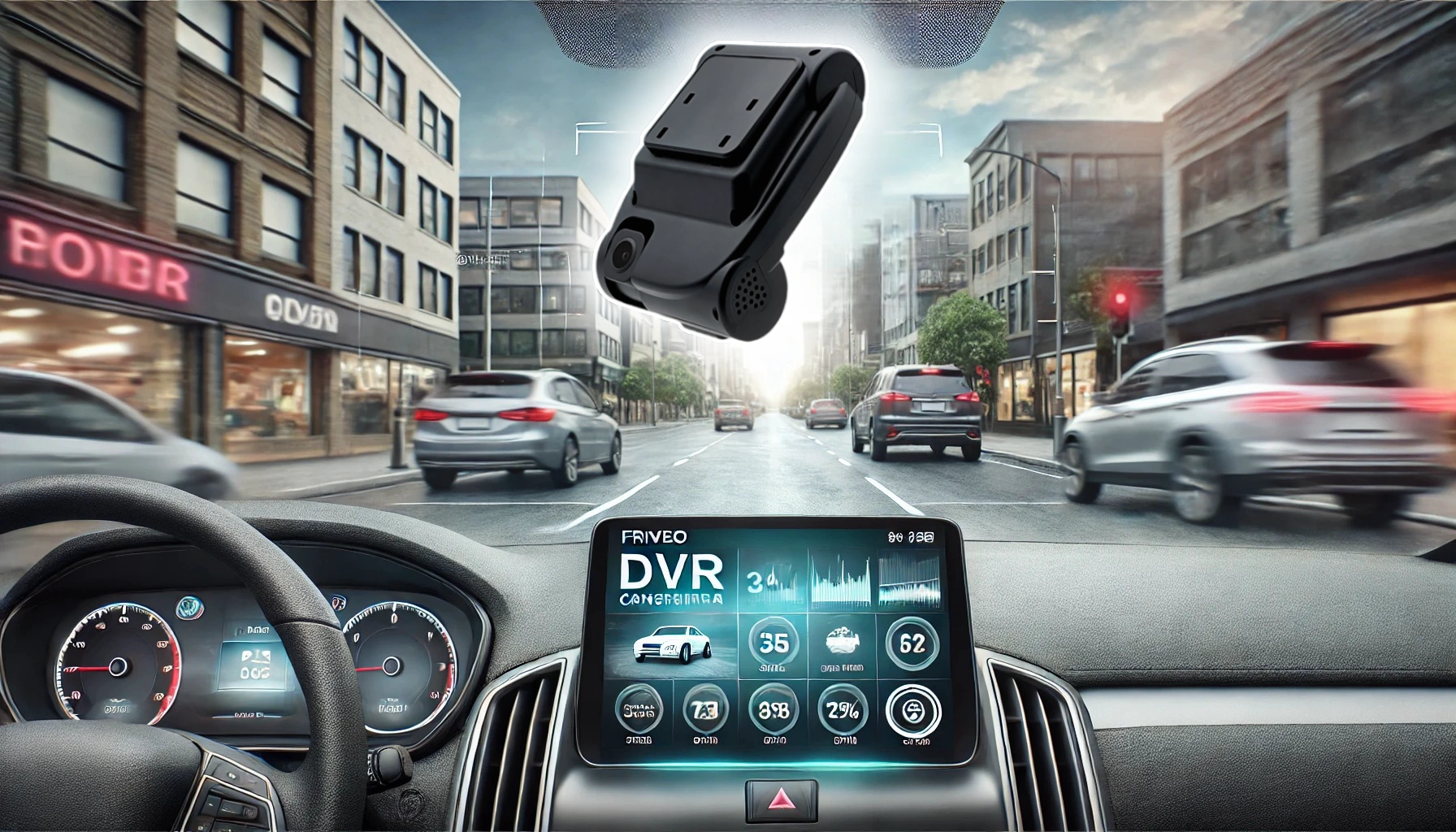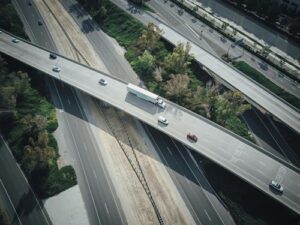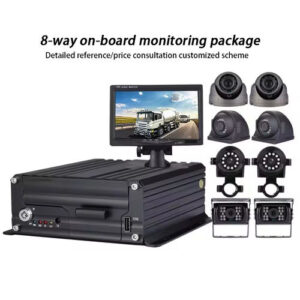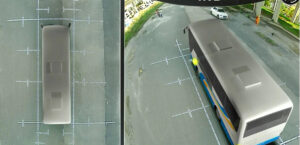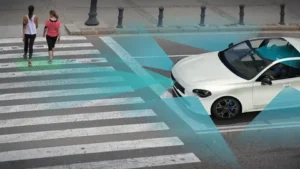Front DVR (Digital Video Recorder) cameras have revolutionized vehicle safety and monitoring by providing real-time video recording, advanced analytics, and seamless connectivity. Whether used for personal safety, fleet management, or evidence collection, these cameras have become a crucial component of modern automotive technology. This article delves into the features, benefits, applications, and future trends of front DVR cameras.
What is a Front DVR Camera?
A front DVR camera is a high-tech device installed on a vehicle’s windshield or dashboard to capture video footage of the road ahead. These cameras use advanced recording technologies and often integrate with GPS, sensors, and cloud platforms to enhance safety, convenience, and accountability. According to the NHTSA, DVR cameras play a critical role in documenting driving behavior and accident scenarios, making them indispensable for modern vehicles.
Key Features of Front DVR Cameras
Front DVR cameras come equipped with cutting-edge features that enhance their functionality and user experience:
- High-Definition Video: Records clear footage, often in 1080p or 4K resolution, ensuring every detail is captured.
- Wide-Angle Lens: Provides a broad field of view to cover multiple lanes and minimize blind spots.
- Loop Recording: Continuously records over older footage to maximize storage efficiency.
- G-Sensor Integration: Automatically saves footage during sudden stops or impacts to prevent data loss.
- GPS Tracking: Tracks the vehicle’s location, speed, and route for added context in recordings.
- Night Vision: Uses infrared LEDs to capture clear footage in low-light or nighttime conditions.
- Cloud Storage: Offers secure storage and remote access to video data via cloud platforms.
- ADAS Integration: Features advanced driver assistance systems such as lane departure warnings and collision alerts.
- Two-Way Audio: Includes microphones and speakers for real-time communication or sound recording.
How Front DVR Cameras Work
These cameras function as part of a comprehensive vehicle monitoring system, utilizing both hardware and software to deliver robust safety and recording capabilities:
- Video Capture: The camera records high-definition video of the road ahead, documenting everything in real-time.
- Sensor Activation: G-sensors detect sudden movements or impacts, triggering automatic recording of critical events.
- Data Storage: Footage is stored locally on SD cards or uploaded to the cloud for easy retrieval and analysis.
- Connectivity: GPS and WiFi integration allow for real-time tracking and video streaming to connected devices.
- Driver Alerts: Advanced features like ADAS provide real-time warnings to assist drivers in avoiding collisions and maintaining safe driving habits.
Benefits of Front DVR Cameras
1. Enhanced Road Safety
Front DVR cameras monitor the road ahead, helping drivers detect hazards and avoid collisions, thereby enhancing overall safety.
2. Evidence Collection
Recorded footage serves as invaluable evidence for resolving insurance claims, legal disputes, and traffic violations.
3. Driver Accountability
The presence of cameras encourages safer driving habits, reducing instances of reckless or distracted driving.
4. Real-Time Monitoring
For fleet operators, front DVR cameras enable real-time monitoring of vehicles, ensuring compliance with safety protocols.
5. Cost Savings
By preventing accidents and reducing insurance claims, DVR cameras help save costs for individual drivers and fleet operators.
6. Nighttime Security
With night vision capabilities, these cameras provide clear footage during nighttime driving, ensuring safety in low-light conditions.
Applications of Front DVR Cameras
Front DVR cameras are versatile tools with applications across various sectors:
1. Personal Vehicles
Individual drivers use DVR cameras for accident documentation, improving driving habits, and enhancing personal safety.
2. Commercial Fleets
Fleet operators install front DVR cameras in trucks, delivery vans, and taxis to monitor drivers, optimize routes, and ensure cargo safety.
3. Public Transport
Buses and other public transport vehicles use DVR cameras to enhance passenger safety and document incidents on the road.
4. Emergency Services
Ambulances, fire trucks, and police vehicles rely on DVR cameras for evidence collection and operational review.
5. Ride-Sharing Services
Companies like Uber and Lyft use front DVR cameras to ensure driver and passenger safety and resolve disputes.
Future Trends in Front DVR Cameras
The evolution of front DVR cameras is being driven by technological advancements and the growing demand for smarter safety solutions:
1. Integration with AI
AI-powered cameras will offer predictive analytics, detecting potential hazards and providing proactive safety measures.
2. 5G Connectivity
The adoption of 5G networks will enable faster data transmission and seamless integration with other smart devices.
3. Enhanced Video Quality
Cameras will feature ultra-high-definition resolutions, such as 8K, for unparalleled clarity in recordings.
4. Sustainability
Energy-efficient designs and solar-powered models will support eco-friendly driving practices.
5. Cloud-Integrated Ecosystems
Cameras will become part of larger cloud-based ecosystems, offering comprehensive data management and analytics.
Challenges and Solutions
While front DVR cameras offer numerous benefits, they also present certain challenges:
1. Privacy Concerns
Addressing privacy issues requires compliance with regulations and the use of encrypted storage solutions.
2. High Initial Costs
Advanced models can be expensive, but their long-term benefits in safety and cost savings often justify the investment.
3. Maintenance Requirements
Regular maintenance is essential to ensure optimal performance, particularly in harsh environmental conditions.
Conclusion
Front DVR cameras are transforming the way we drive by enhancing safety, improving accountability, and providing invaluable insights. From individual drivers to fleet operators, these cameras offer numerous benefits, including accident prevention, evidence collection, and real-time monitoring. As technology continues to advance, front DVR cameras will become even more sophisticated, featuring AI integration, 5G connectivity, and enhanced video quality. Explore the latest front DVR cameras to experience the future of automotive safety and monitoring.

